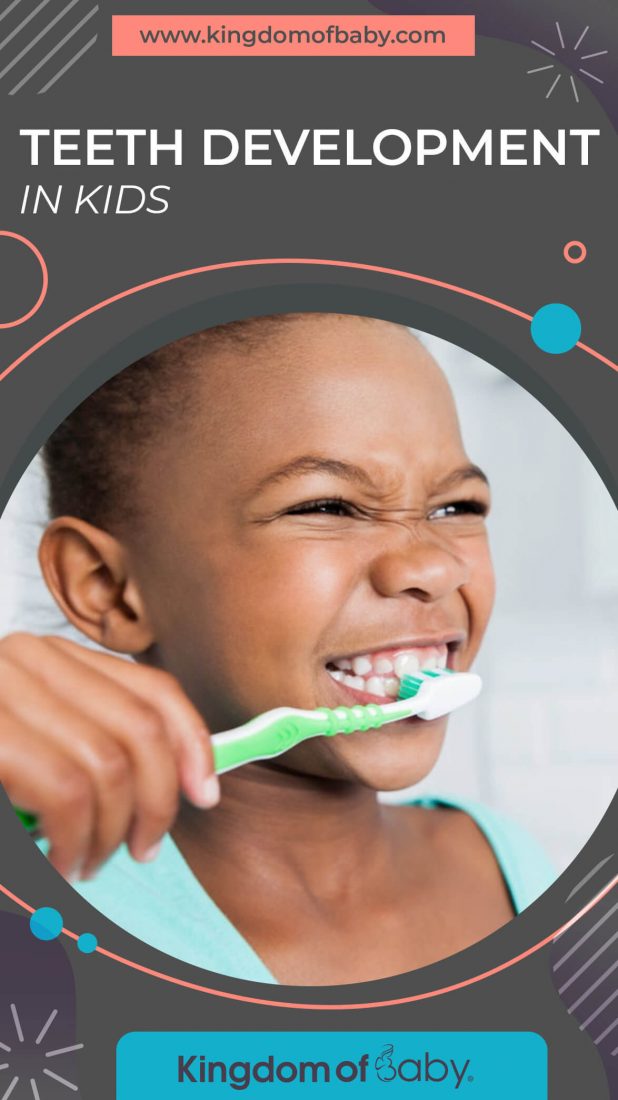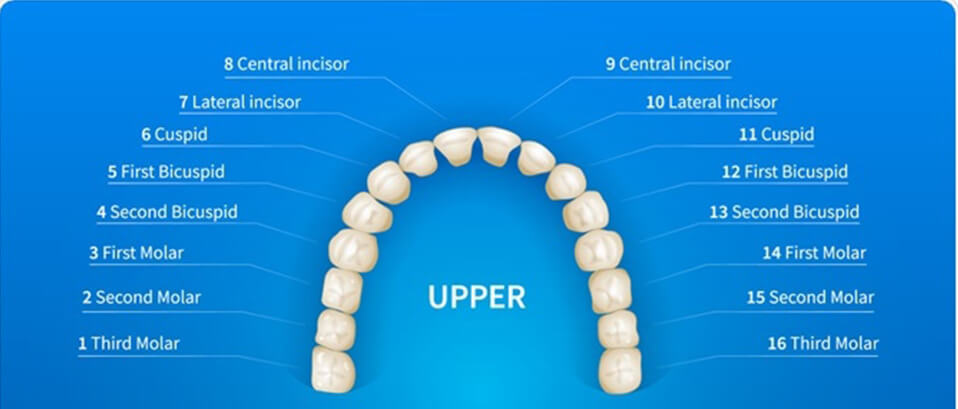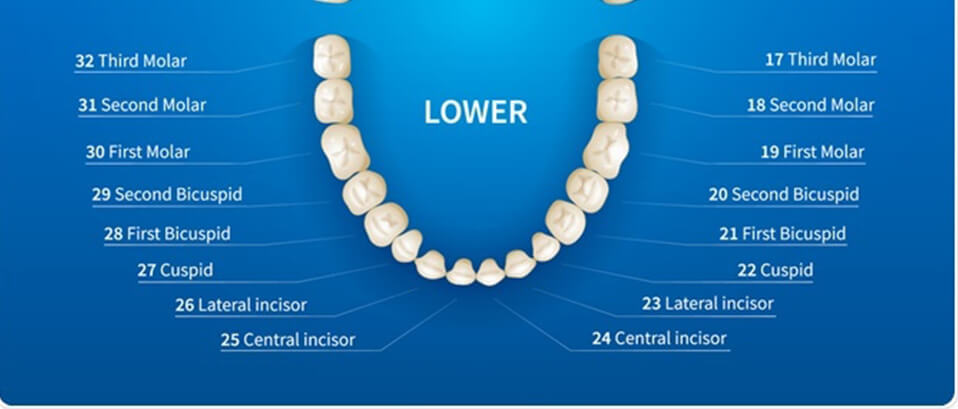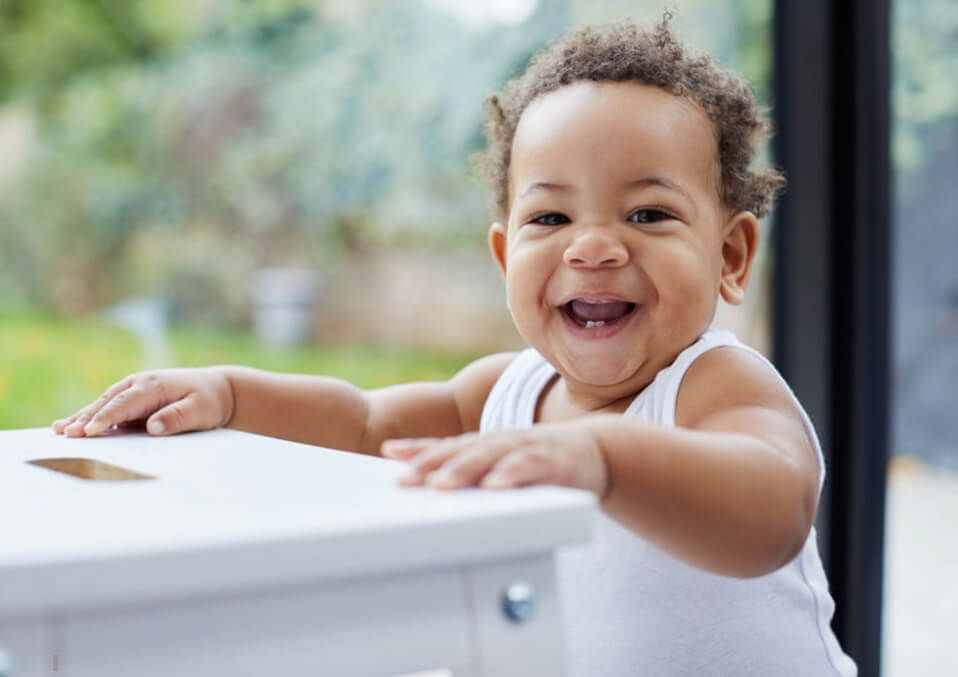
Usually, babies are born with 20 primary teeth. They will start to appear one by one starting about 6 months old and they are usually be completed up to 3 years old. This teeth development in kids is called the teething. Take note that these teeth will fall out many times during their childhood.
Babies are born with these following kinds of teeth:
- 4 first molars
- 4-second molars
- 4 central incisors
- four lateral incisors
- 4 canine teeth
Usually, the teeth in the center of the bottom jaw appear first in between 4 to 10 months old. If your kid grows teeth in a different part, don’t worry because babies differ. But if you are really disturbed, you can contact a doctor.
Here are the following charts that show the teeth development in kids. It will show when the primary teeth will erupt and shed. Take note that sometimes it varies from every child.
Upper primary teeth development chart

- Central incisor
When the tooth emerges: 8 to 12 months
When the tooth falls out: 6 to 7 years
- Lateral incisor
When the tooth emerges: 9 to 13 months
When the tooth falls out: 7 to 8 years
- Canine
When the tooth emerges: 16 to 22 months
When the tooth falls out: 10 to 12 years
- First molar
When the tooth emerges: 13 to 19 months
When the tooth falls out: 9 to 11 years
- Second molar
When the tooth emerges: 25 to 33 months
When the tooth falls out: 10 to 12 years
Lower primary teeth development chart

- Lateral incisor
When the tooth emerges: 10 to 16 months
When the tooth falls out: 7 to 8 years
- Central incisor
When the tooth emerges: 6 to 10 months
When the tooth falls out: 6 to 7 years
- First molar
When the tooth emerges: 14 to 18 month
When the tooth falls out: 9 to 11 years
- Second molar
When the tooth emerges: 23 to 31 months
When the tooth falls out: 10 to 12 years
- Canine
When the tooth emerges: 17 to 23 months
When the tooth falls out: 9 to 12 years
As we can see from the chart, usually the first two teeth to erupt are the two bottom central incisors. The second is the four front teeth at the top appears. Then other teeth will slowly appear as well, usually in pairs. The complete set of teeth will appear usually from 3 years to 7 years old.
If baby teeth fall out after a couple of years, why is it important to care for them?
At the age of 4, the facial bones of the child will begin to grow. It will create spaces between the primary teeth to provide necessary space for the larger permanent teeth later on. When do permanent teeth come in? At the age of 6 years old to 12 years old, permanent teeth will come in and both primary teeth and permanent teeth will reside in the mouth for the meantime.
Why baby teeth are important?

In order to chew food easily and pronounce words properly, baby teeth are important. It is there to help with those tasks. It is also needed to secure a place in the jaw for the permanent teeth to appear later on. It’s important that parents will keep the babies’ primary teeth clean. Clean teeth will protect the baby against cavity, infection, and pain. When you ignore decayed baby teeth, you can damage the permanent teeth underneath.
How do we care for the baby’s teeth?
Frequent exposure to sugary food can destroy the teeth. As soon as the baby teeth appear in the mouth, it can already start to decay. That’s why it needs to be cared for properly.
Tips on how we can care for the teeth development in kids:
- Wipe the baby’s gums with a clean gauze pad or a wet facecloth after each feed. You can also use soft toothbrush and water to brush your babu’s first teeth.
- Older kids over 18 months need supervision when they are cleaning their teeth. They can use a pea-size of children’s toothpaste but should not swallow it. Rinse with water after brushing.
- Don’t allow your baby to fall asleep with a bottle of formula, milk, fruit juice or any sweetened fluid.
- Do not dip the dummy in sugar or honey
- Always clean the dummy before you give it to your baby
- Regular visit every 12 months to your dentist.
Read also: The normal timeframe when your kid stop napping
Treat your baby’s teeth kindly. If you can already brush your baby’s teeth with a soft toothbrush and a low-fluoride toothpaste, brush in little circles. Go around and around until you have covered all surfaces of the tooth.
Reserve space for their permanent counterparts
Give the face its normal appearance.
Aid in the development of clear speech.
Help attain good nutrition (missing or decayed teeth make it difficult to chew, causing children to reject foods)
Help give a healthy start to the permanent teeth (decay and infection in baby teeth can cause damage to the permanent teeth developing beneath them)
Here are some benefits of the primary teeth in babies:
- Baby teeth reserve a space for the permanent teeth later on
- Baby teeth or primary teeth give the face a normal appearance
- It aids in a clear speech and pronunciation of the babies
- Decayed teeth make it difficult for kids to chew food so they reject the food. With clean and healthy baby teeth, babies will gain the right nutrition from food.
- Infected or decayed teeth can damage the permanent teeth later on. But if the baby has healthy primary or baby teeth, the permanent teeth will also grow healthy.
If there are any worries about the teeth development in kids, contact your dentist right away. Truly, taking note of the teeth development in kids is really important. If they are not well-taken care of, it can cause a problem and hassle in the future. Your kids might have a decayed tooth and they may suffer from it. Parents will also suffer to find a remedy. That’s the reason parents should prevent those things to happen by always making sure that the baby’s primary and permanent teeth are clean and infection-free.
Read also:
- What are The Best Teething Toys for Babies?
- Healthy Teething Biscuits Recipes Your Kids Will Surely Love
- Late Teething as a Sign of Intelligence and Other Myths Debunked


